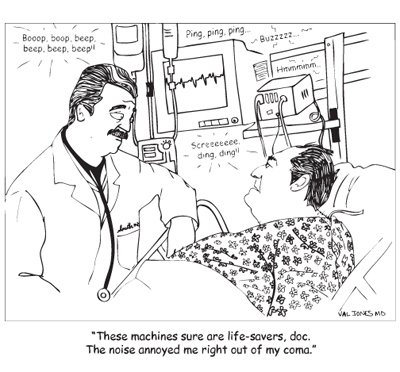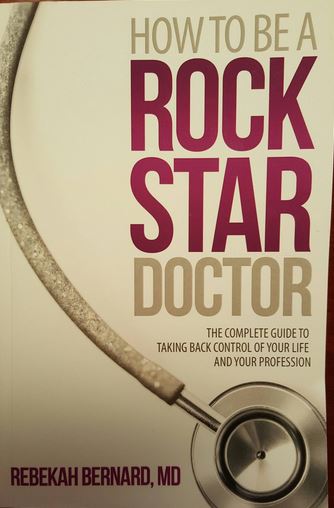February 13th, 2011 by Bryan Vartabedian, M.D. in Opinion, True Stories
No Comments »

 It was sometime in the mid-nineties that parents started showing up in my office with reams of paper. Inkjet printouts of independently unearthed information pulled from AltaVista and Excite. Google didn’t exist. In the earliest days of the Web, information was occasionally leveraged by families as a type of newfound control.
It was sometime in the mid-nineties that parents started showing up in my office with reams of paper. Inkjet printouts of independently unearthed information pulled from AltaVista and Excite. Google didn’t exist. In the earliest days of the Web, information was occasionally leveraged by families as a type of newfound control.
A young father and his inkjet printer
One case sticks clearly in my mind. It was that of a toddler with medically unresponsive acid reflux and chronic lung disease. After following the child for some time, the discussion with the family finally moved to the option of a fundoplication (anti-reflux surgery). On a follow-up visit the father had done his diligence and appeared in the office with a banker box brimming with printed information. He had done his homework and his volume of paper was a credible show of force.
At the time in Houston, the Nissen and Thal fundoplication were the accepted fundoplication procedures in children. Deep from the bottom of one of the boxes, the father produced a freshly-reported method of fundoplication from Germany. He had compared the potential complications with other types of fundoplication and this was the procedure he wanted.
What he didn’t understand was that an experimental technique used on a limited numbers of adults didn’t necessarily represent the best option for his toddler. I gave it everything I had but didn’t get very far. The tenor of his argument was slightly antagonistic. Ultimately there was nothing more I could do. I deferred the remainder of the discussion to one of our best “talking” surgeons, but knew the father wouldn’t get the time and consideration that I had offered.
I never saw the child again. As they say, the father voted with his feet. Read more »
*This blog post was originally published at 33 Charts*
September 10th, 2010 by BarbaraFicarraRN in Better Health Network, Health Policy, Health Tips, Opinion
No Comments »

 Some patients struggle to communicate effectively with their doctors and some doctors and nurses find it difficult to communicate and collaborate with each other.
Some patients struggle to communicate effectively with their doctors and some doctors and nurses find it difficult to communicate and collaborate with each other.
Historically, the dynamic symbiotic relationship between doctors and nurses has been a little shaky, evidenced by the lack of engagement and respect for one another.
Hospitals are chaotic and stressful. Working in such an environment can lead to frustration and it can take a toll on the staff. Instead of a good working relationship (which may never have been fostered to its full potential from the start), doctors and nurses become a fractured team. As a result, the fractured team will not effectively communicate and patient care may suffer devastating consequences. Read more »
*This blog post was originally published at Health in 30*
September 6th, 2010 by KevinMD in Better Health Network, Health Policy, News, Opinion, Research
No Comments »

A new patient recently said he was referred to me after his last doctor had left medicine. His old doctor always looked unhappy and burned out, he noted.
Burnout affects more than half of doctors, according to researchers at the University of Rochester School of Medicine. Beyond mere job dissatisfaction, these doctors are emotionally exhausted to the point where they lose focus. They tend to be more depressed — perhaps one reason why doctors have a higher suicide rate than the general population.
While burnout can happen in any profession, the performance of stressed-out doctors can hurt someone else: Patients. Read more »
*This blog post was originally published at KevinMD.com*
September 1st, 2010 by Toni Brayer, M.D. in Better Health Network, Health Policy, News, Opinion, Research
No Comments »

In a surprising report from the Archives of Internal Medicine, we learn that most hospitalized patients (82 percent) could not accurately name the physician responsible for their care and almost half of the patients did not even know their diagnosis or why they were admitted.
If that isn’t enough, when the researchers queried the physicians, 67 percent thought the patients knew their name and 77 percent of doctors thought the patients “understood their diagnoses at least somewhat well.” I would call that a pretty significant communication gap.
Ninety percent of the patients said they received a new medication and didn’t know the side effects. Although 98 percent of physicians thought they discussed their patients’ fears and anxieties with them, only 54 percent of patients thought they did. Read more »
*This blog post was originally published at ACP Internist*
August 15th, 2010 by DrWes in Better Health Network, Health Policy, Opinion
No Comments »

“Live the questions now. Perhaps then, without hardly noticing, you will live along some distant day into the answers.” – Rainer Maria Rilke
With the tectonic shifts underway in America’s healthcare delivery model, doctors influence in shaping the forces ahead seems to be dwindling.
It started with the entire healthcare bill drafted by a team of some undisclosed, very influential academics, lawyers and policy wonks adept at social security and tax laws and was morphed by corporate and hospital interests with huge political and financial influence. Before the legislation was even read, the American Medical Association had stamped their seal of approval, worried that “they’d be eaten if they weren’t at the table.” As a result, a significant number, no, I’ll stick my neck out here and say a majority of doctors, had little to do with shaping healthcare in America as we will come to know it.
But I would also bet that most of Americans want doctors with their best interests at heart to be integral participants in shaping our new healthcare system.
So now, as doctors align themselves with a single health system employer so they can beg for a portion of the government’s soon-to-be-implemented “bundled” (bungled?) payment scheme to healthcare systems for episodes of care, how will doctors have any meaningful voice at improving healthcare for our patients and ourselves? Enter social media. Read more »
*This blog post was originally published at Dr. Wes*
 It was sometime in the mid-nineties that parents started showing up in my office with reams of paper. Inkjet printouts of independently unearthed information pulled from AltaVista and Excite. Google didn’t exist. In the earliest days of the Web, information was occasionally leveraged by families as a type of newfound control.
It was sometime in the mid-nineties that parents started showing up in my office with reams of paper. Inkjet printouts of independently unearthed information pulled from AltaVista and Excite. Google didn’t exist. In the earliest days of the Web, information was occasionally leveraged by families as a type of newfound control.



 Some patients
Some patients 










